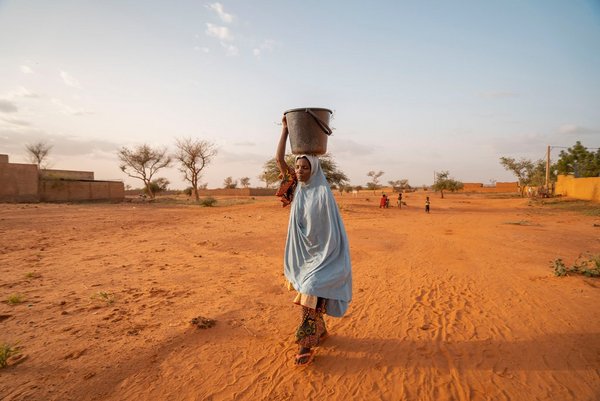 Read this article in French
Read this article in French- Share this article
- Subscribe to our newsletter
Huge climate adaption finance gap
Progress on climate adaptation is slowing on all fronts when it should be accelerating to catch up with rising climate change impacts and risks, the United Nations Environment Programme (UNEP) warns in November 2023. Adaptation finance needs of developing countries are 10-18 times as big as international public finance flows – over 50 per cent higher than the previous range estimate.
As a result of the growing adaptation finance needs and faltering flows, the current adaptation finance gap is now estimated to be 194-366 billion US dollars per year. At the same time, adaptation planning and implementation appear to be plateauing. This failure to adapt has massive implications for losses and damages, particularly for the most vulnerable.
The funds required for adaptation in developing countries are estimated to be in a plausible central range of USD 215 billion to USD 387 billion per year this decade.
Despite these needs, public multilateral and bilateral adaptation finance flows to developing countries declined by 15 per cent to USD 21 billion in 2021. This dip comes despite pledges made at COP26 in Glasgow to deliver around USD 40 billion per year in adaptation finance support by 2025.
While five out of six countries have at least one national adaptation planning instrument, progress to reach full global coverage is slowing. And the number of adaptation actions supported through international climate funds has stagnated for the past decade.
High costs through losses and damages
The 55 most climate-vulnerable economies alone have experienced losses and damages of more than USD 500 billion in the last two decades. These costs will rise steeply in the coming decades, particularly in the absence of forceful mitigation and adaptation.
Studies indicate that every billion invested in adaptation against coastal flooding leads to a USD 14 billion reduction in economic damages. Meanwhile, USD 16 billion per year invested in agriculture would prevent approximately 78 million people from starving or chronic hunger because of climate impacts.
However, neither the goal of doubling 2019 international finance flows to developing countries by 2025 nor a possible New Collective Quantified Goal for 2030 will significantly close the adaptation finance gap on their own and deliver such benefits, UNEP says.
Ways to increase finance for adaption
The report Adaptation Gap Report 2023: Underfinanced. Underprepared – Inadequate investment and planning on climate adaptation leaves world exposed, published by UNEP identifies seven ways to increasing financing, including through domestic expenditure and international and private sector finance. Additional avenues include remittances, increasing and tailoring finance to small and medium enterprises, implementation of Article 2.1(c) of the Paris Agreement on shifting finance flows towards low-carbon and climate resilient development pathways, and a reform of the global financial architecture, as proposed by the Bridgetown Initiative.
The new loss and damage fund will also be an important instrument to mobilise resources, but issues remain. The fund will need to move towards more innovative financing mechanisms to reach the necessary scale of investment.
(UNEP/ile)
Read more on the UNEP website





Add a comment
Be the First to Comment